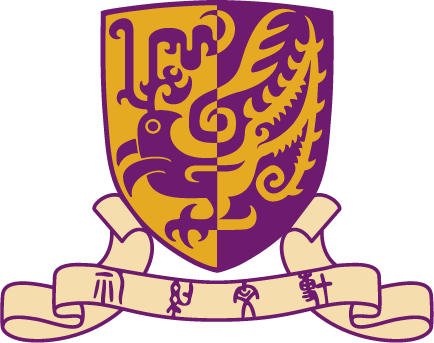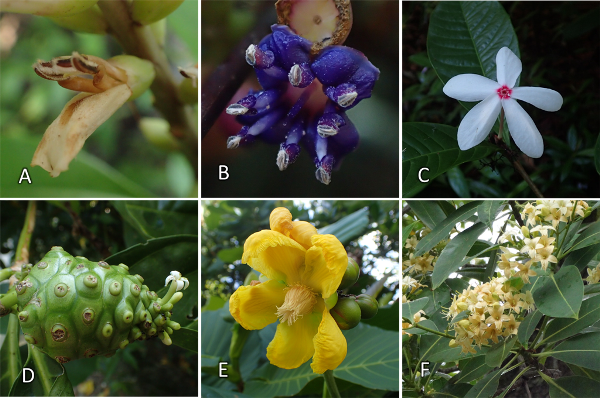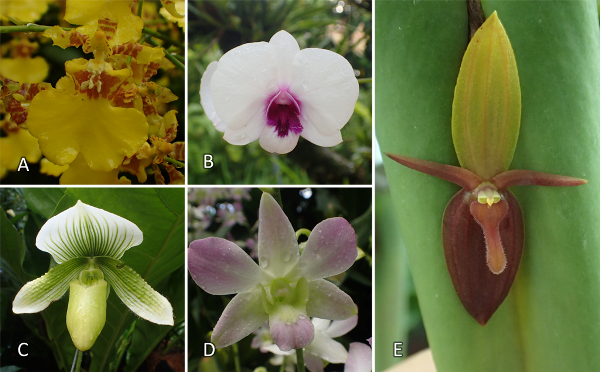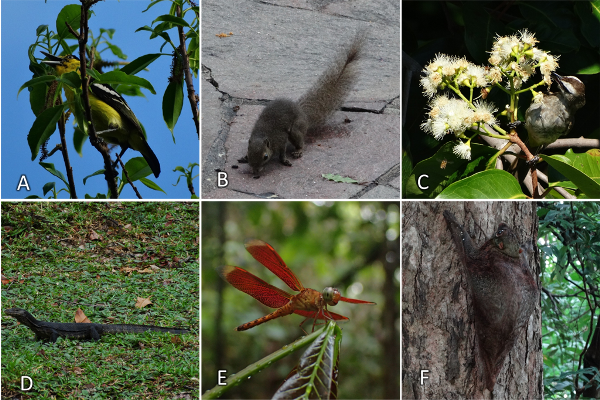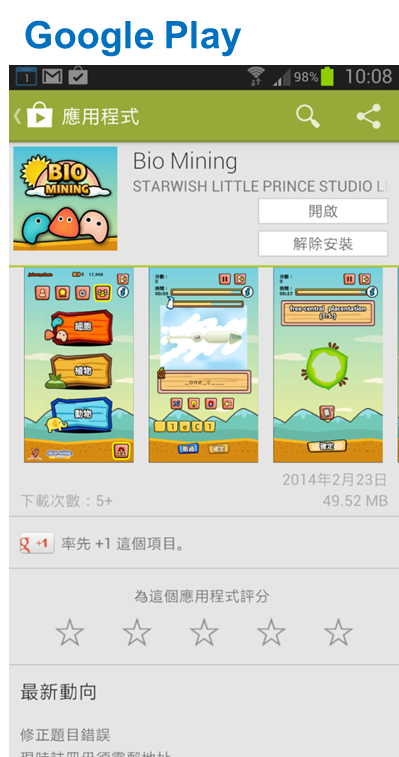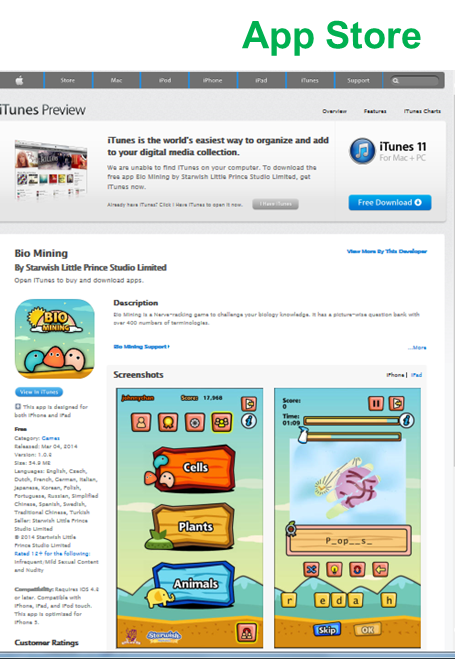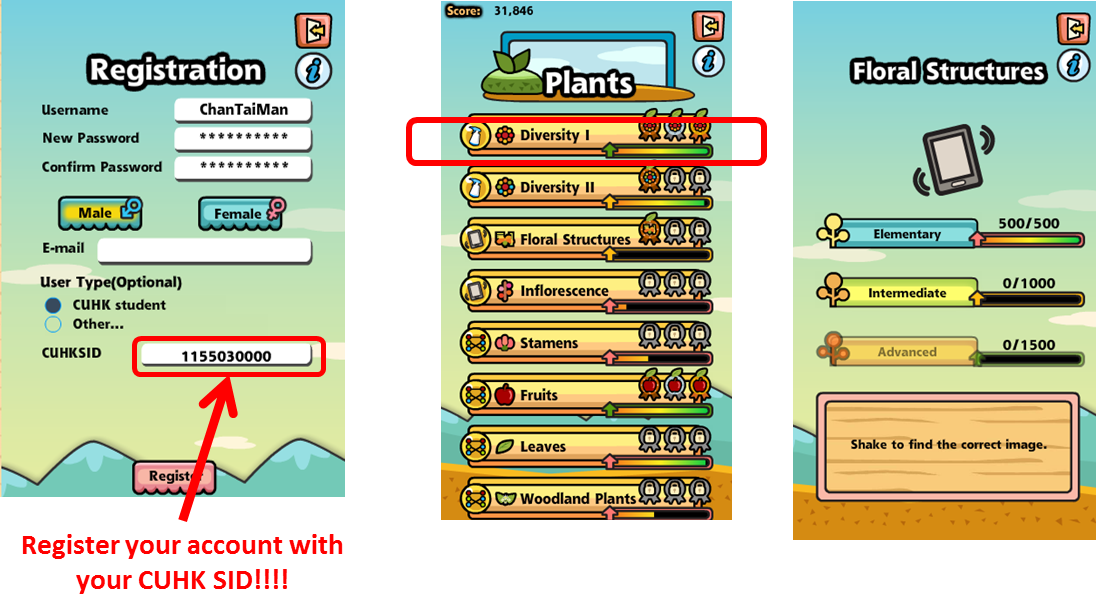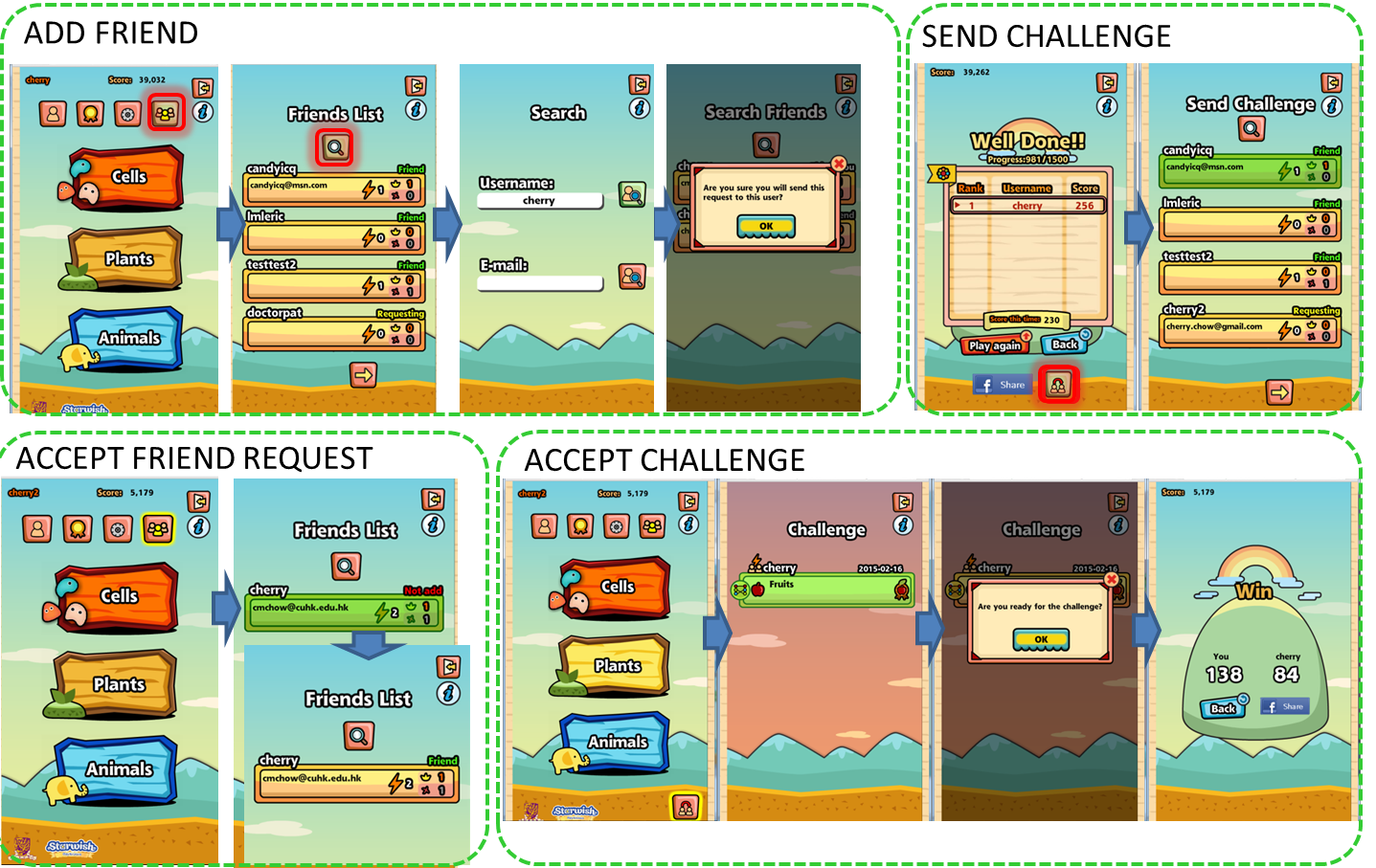|
I have gained insight on how Singapore is doing in establishing national parks and nature reserves. I always heard from others that Singapore is a nice place for living. People even called it the Garden City. After the trip, I recognized that a great city design can raise the living standard. I admire the brilliant work done by architects. The local government put great effort in planting trees in the city. I wonder whether this kind of urban design can be adopted in Hong Kong, but there will be still a long way to go.
I realized from the lectures that scientists from different areas cooperate with each other in order to deal with a particular conservational issue, in the sake of the environment of their own country. The government also gives great support to scientific research. This kind of cooperation is the key to success in conservation. However, in citizen level, people are using so many plastic bags. I think Singapore should implement plastic bag levy, just like Hong Kong.
From the field studies, I was exposed to the great biodiversity in Singapore. I learnt some new bird and plant species and their ecological roles. Besides learning ecology and biodiversity from the natural sites, visiting the local market allowed me to experience local Singaporean culture. I love the food in Singapore and I enjoy this field trip very much.
LAW Chiu Yi
|
|
In this trip, the things that impressed me most is the effort of Singapore government in promoting greening in the country. During the trip, we have visited different parks and reserve, which a lot of them occupy a huge area in Singapore, this could show the government is willing to put resources in promoting greening in the country. Moreover, in these parks and reserve, we could see most of them are with well management that the plants and animals grow in a comfortable way with enough resources for them to grow naturally. There are also a lot of educating facilities in these areas, this shows the government has put effort in promoting natural conservation. In Hong Kong, most of the natural reserve and parks are not that large in size, also, in our streets, we could hardly find some large greening area, unlike Singapore, there are a lot of small parks in the city that we could find greening area in the city everywhere. I really appreciate the government in Singapore in promoting greening, it does not just focus on development, but also care about the natural environment, and therefore I thought Singapore is deserved to have the name of "Garden City".
On the other hand, in this trip, I have really broadened my horizon. In the past, I usually just look at the specimen in the laboratory after learning the species in the lecture, in this trip, I have encountered many different plant and animal species that I have learnt during lectures. I was impressed by these amazing species, and I thought listening to the tour guide introduction and touching these species by my own hands in the natural environment, this learning method is much interesting and I could have a strong memory on them. In addition, I have seen a lot of species that I have never seen before, such as, long-nosed whipsnake and blue-tongued lizard, this trip let me gain a lot of new knowledge and I am really amazed by this amazing ecosystem in the world!
In this trip, I have broken through myself that I have stepped out of the classroom and really gone to the natural world to get in touch with the nature, which I rarely do so in Hong Kong. I understand the nature is really amazing and we should protect it as long as we can!
SIU Wing Man
|
|
Apart from the knowledge of the plant and animals, during the trip, I realize that Singapore government put a lots of effect in biological science education which we should learn from it. In different trails, they use the attractive ways to teach children biological science, such as the large models and the information broad in the visitor centre. Also there are lots of plant species in the Botanic Garden and it is free. It attracts citizens to go there.
MA Ka Yu
|
|
An important topic to me is city greening equals to nature conservation or not?
Singapore is very similar to Hong Kong so it impressed me. In the past, Britain and Japan came and develop the places. During develop, forests, mangrove, beaches...lots of precious habitats were lost because the colonial government built roads, settlements, reclaimed the coast...to contribute economic development but not natural environment. Nowadays, wars are not present in Singapore and Hong Kong. People receive education and know more nature. Nature conservation becomes an important topic to us.
To this, I think Hong Kong is better than Singapore because we have large area for country parks where urban development is banned. When we look at the map of Hong Kong, the green area occupy a very large proportion because our development is concentrated and in a compact form. When we talk about nature conservation, we talk about not develop in natural environment. For example, we don't agree reclamation is a good way for increasing land supply since it destroys the habitat of Chinese White Dolphin. However, Singapore has some different approach. To be a' "Garden city" is what they do. We can see Gardens by the Bay. There are some greenhouses to educate public about plants. Also, they carry out greening on the building. These need high cost. Of course, same with Hong Kong, Singapore's economy develop rapidly so they have money. I am not saying greening is not good but it is an artificial way to do "green". When we look at the map of Singapore, we see grey parts are more than the green parts. I am thinking of being a garden city is that a conservation, a good way to protect nature or just a good way to gain a good image of the country.
I know there are nature reserves in Singapore such as MacRitchie reservoir parks. NUS also provides good education approach to people. However, when I see Gardens by the Bay, I don't think it is nature appreciation. I saw beautiful plants in greenhouse and learn much but this kind of greenhouse is not good for environment. The temperature inside is low but the outside is very hot on that day. The air conditioner was turned on to pretend a cloud forest. The construction, operation of the building may bring a lot of damage to environment. Is this "being a garden city" a sustainable way? "Garden" is an artificial thing, it is not nature, it is a place with plants for people enjoy and relax only. I think the focus is human but not nature. The ecosystem is modified. For example, insects, they called pests, are not allowed in their beautiful garden.
When I enter the forest, I felt really sad because the tour guide told us that many of the forests are secondary forests. It means people destroyed a forest in the past but I still felt good. Secondary forests also mean that it becomes a forest again. The government planned some area to be nature reserve. It allowed animals and plants live in there but not covered by cement.
In Hong Kong, we do not have a concept of garden city. Sometimes, we focus on nature more than human. Not disturbing the nature is a good way. You can have urban development by redevelop the old area, changing land uses, good urban planning but never developing country parks. We have Country Parks Ordinance to protect environment. There are marine parks, nature reserves and special areas. In the urban area, we have some parks like Kowloon Park.
Both Hong Kong and Singapore are small places, they have high biodiversity, a great present from God. How to conserve the nature is a challenge for us.
Really, how nature is important to us? See the animals, see the plants, don't always stay at home and do nothing. Nature is the heart of us so we must protect it. It's true. This is what I gained from the trip.
This field trip lasted five days only. I can't tell I see the whole part of Singapore but just a little part. This is my few opinion but I know there may some problems, it maybe not the best. Anyway, thank you for reading my comments.
LI Choi Chi
|
|
Despite the hot, humid and stuffy weather, Singapore is really a great city to visit with its greenery scene and their national park.
We met a lot of lovely animals during the trip and I have learned some species that can be found in Singapore! We have learnt a lot of animals' name in Biology lessons Abut we could barely remember unless we have met them. After going to Singapore, I could already remember some of the species! I remember that my friend and I met a cute little lizard named as the Clouded monitor. Its tongue is metallic blue in color. This experience triggers me to search more information about it. And I could never imagine that we can come that close to a lizard! Also, I have also learned a plant called the alligator flag, It impressed me by its shape (a bit weird, zig-zag like), it is a water plant. The tour guide tell us that it swing when the alligator come so the farmer use it as a signal to prevent the attack of alligator.
Besides learning species, I have also learned how to appreciate and embrace the nature. I remember that I have never NEVER imagine that a leaf would taste like hot chili sausage! I have also tried to touch a walking stick. This is the first time for me to eat a fresh leaf from trees! There are so much things that I couldn't learn from lessons or books, only if I experience the nature will i know how amazing it is. In Hong Kong, we have books and leaflet that teach us to conserve, to save the environment. Yet people still destroy it. Why? I guess one of the reason is that books and leaflet are not persuasive enough, children from school will never understand how beautiful nature is if they only stay indoors, so the best way to deliver the message of conservation perhaps is to bring them to the real natural environment, to feel how important nature is and to love nature, and therefore protect the nature.
Normally I don't like visiting museum as it seems boring. Yet the NUS museum is different from what I expected. It is beautiful and attractive and is also a good place to take pictures and spend your holiday. Unlike museum in Hong Kong, the NUS museum not only display the information of plants and animals, they also put effort in designing the museum as to attract more tourists to visit, then the public will be more interested in visiting the museum.
Singapore is a good example on balancing urban development and nature conservation. The government uses nature as an attraction, attracting tourists and at the same time, educates its citizen to conserve. Yet on the other hand, the Hong Kong government is still trying to destroy the environment to build more private housing, hotels or golf land. Some merchants always say that we must sacrifice some land to boost our economy, the success of Singapore really give a slap in the face of these merchants and it proves that the natural environment is also valuable to the economy.
LUI Ka Yi
|
|
Firstly, I have learned to appreciate the nature. During the trip, the tour guides and professors introduced us many species when we were walking along the road, no matter on the hill, in the botanic garden, or even on the street. I was so amazed that why they could easily spot some special species, and whenever they spotted it they knew the name of the species, even when the birds were flying quickly. I remembered when we were travelling on the bus, it is surprised that the tour guide and the professors could immediately spot a small kingfisher on the road and introduced it to us. Therefore, after this trip, I learnt to be aware of the plants and animals surrounding us in our daily life. I found that I became more sensible to the environment, like I would try to identify and appreciate some species in our CUHK campus, like the pine trees and orchid flowers.
Secondly, I have broadened my horizon about another city in the world and there are many things we can learn from them. When we arrived at the city centre of Singapore, I saw much beautiful architecture. Unlike Hong Kong with all high rises, each construction of Singapore has its own style. I could see how Singapore people use their creativeness to make the city better planned and more beautiful. Seeing the architecture, like the glass house in Gardens by the bay, I even thought that I was in a future world. Also, one important point we can learn from Singapore is that, most of the building in Singapore do not use air conditioners; instead, they open a lot of windows and use fans. This ensures better ventilation and prevents the spread of disease as well as save more energy. I think this is what Hong Kong can learn from Singapore.
KWAN Yu
|
|
Through this five-day field trip to Singapore, I have gained lots of valuable experiences and unforgettable memories.
Knowledge
In these five days, following the tour guide and teachers, we had been to different famous places, which all are of high degrees of ecological and learning value.
One of my most favourite place is the Sungei Buloh Wetland Reserve. In different trails, I had chances to take a closer look to different species living in the pods, the mangrove, and the mud area. It was the first time for me to look at such large spiders with an extremely short distance between the spiders and I! It was really unforgettable! I felt very excited and satisfied because I was able to capture them down successfully hahaaaa:P There are some observation pods constructed near the sea. It is really an excellent place for us to relax after walking for a long journey since the views are so beautiful!
Besides, the Garden By the Bay also amazed me a lot. I admire the architecture so much that the whole garden is just like a cyber place in the future! There are beautiful and colorful flowers everywhere. Also, the souvenir shop there was a wonderful place for shopping. There were lots of products of plants sold.
One of my most unforgettable experiences is looking at the tall trees in Singapore. I know that the trees in Singapore are extremely high, much much higher than that in Hong Kong because of the difference in habitats and several environmental parameters. When I tried to take photos of the tall trees, actually they exceeded my camera screen as they are too huge and tall! This is a really special and remarkable difference that I had observed comparing Singapore and Hong Kong.
Moreover, I had also granted chances to look for species that are unique to Singapore. Beside the tree, almost anything in Singapore is of the XXXXL size of that of Hong Kong. In the Sungei Buloh Wetland reserve, I had observed the biggest mudskipper that I have ever seen in my life!!
Friendship
One of the happiest things in this trip is the relationship among our groupmates. Although five of us have already been accompanying each other in the university life that we always study together, this trip has provided us a valuable opportunity to live together, go everywhere together, and learn aboard together. This has made us know even deeper about each other. We do treasure every moments that we spent together! :D
To conclude, I have gained a lot from the field trip. It is definitely a happy experience for us!
YEUNG Yan Lok
|
|
It is really a nice trip not only to learn, but also an opportunity to strength the relationship within Biology students.
In our daily routine, we only attend lessons and leave the classroom afterwards. Besides, we seldom have chance to conduct group projects, so we may have little chance to meet friends in Biology. This trip really created a chance for me to strengthen my relationship with my friends and understand them more thoroughly.
Apart from the regular schedule, we always headed to different tourist spots and native places at night. We knew more about Singapore. It is not a boring place as told by the others who just visited Singapore by joining tours. Going to Singapore by ourselves really let us explore the other side of Singapore. The side that how different ethnic can get along with each other, how people endeavor to fight for their dreams and how they make themselves standing out from the crowd. Also, through communication with the local, I felt a little bit ashamed. Singaporean is really nice and patient in answering enquiries from tourists. On the contrary, we may not proactively give a helping hand to tourists in Hong Kong.
More importantly, the tour guides for this trip are really experienced and knowledgeable. They know a lot about plants and birds. Also, they are never arrogant and willing to learn from us. I learnt the right attitude to learn and also a lot of hard knowledge. In short, it is really a memorable trip and I am anticipating more!
KWOK Wan Hin
|
|
After the 5-day visit in Singapore, I appreciate the government policy on the conservation of the nature. During the visit, we could see there are ecolinks across the roads, which are to allow the animals to pass across the roads in order to prevent accidents from occurring. These kinds of facilities show that the Singapore government is willing to make that place suitable for both animals and human to live. They respect the animals. They are not intended to occupy the whole Singapore just for human to live. Furthermore, there is no clear cut between the natural reserves and residential areas. For instance, MacRitchie Nature Trail, the place where we had our night walk, is located right at the central which is surrounded by roads and housings. During our night walk, there are some recreational facilities like benches, and we could see many people would take a rest there (especially the couples!). And during the visit, we could always see the plants everywhere. I finally understand why Singapore is called “Garden City”. We should learn from them, fusing the nature and architectures together, making a balance between the nature and development.
Actually this field trip is the first trip for me that only visiting the nature related places, usually, I would visit the tourist attractions and go shopping in other trips before. Therefore, I learnt a lot in this trip. It provided an opportunity for me to “go into nature”. I saw countless plants and animals, especially those nocturnal animals, which I have never seen them in Hong Kong! During visiting that three nature trails, I saw many AWESOME species, such as flying lemur, clouded monitor, in such a close distance. Compared to Hong Kong, I can only see some monkeys in some country parks. I was surprised to see these kinds of rare animals which only appeared in my lecture notes before. I could see the beauty of nature and felt how biodiverse Singapore is.
Also, it is my first time to eat the fresh leaves! And the tour guide told us when they were young, they would use the grass to make the “bamboo-copter” as their toys. There is a strong bonding between them, because the nature gave them all the living essentials. They know the importance of nature. However, nowadays, the new generations like us do not understand how important the nature is. It is because we do not understand the bonding between us. Just like the toys, we play the computer games but not those “made in nature”. Therefore, after this trip, I could feel how important the nature means to us, and the other living organisms.
As one of the residents in the earth, we should learn how to live together without harming other “residents”. And the first thing we have to do is to protect our environment and appreciate this awesome planet.
NGAI Ka Man
|
|
Many people said that Singapore is very similar to Hong Kong and they are competitors with each other. However, after participating in the field trip, I am afraid I don't quite agree with the above statement.
True, both places are international city with very limited living space. Yet, in term of greening, I think Singapore has done an excellent job. For example, I could find plantation almost everywhere in the Lion City, even though in the traditional wet market and food centre. Besides, Singaporean planted many rain tree along the busy traffic road. First, it helps to make the air cleaner. Secondly, the row of trees also acts as a shield for cutting the sunshine so as to lower the temperature and UV level on ground. Despite of the limited space, they still endeavour to make their living environment better. Their examples make me realise that there is no more excuse for Hong Kong to neglect the greening work in our city.
TSE Chung Wing
|
|
It is certainly a fruitful trip for us. I remember we visited various kinds of habitats (eg. wetland, secondary forests) and science-related attractions (gardens/ museum) in Singapore, a country in the tropic region. Throughout the trip I gained not knowing more about the animal/ plants in Singapore, but also a more broadened way of learning. And I'd like to share some reflections on the latter :)
1. Learning to communicate with other people/ scholars (from other countries/ regions)
During the trip we mainly used English to communicate with other people, like Pandian as our guide and researchers from DBS, NUS. As such, getting along with different language styles/ accent is the starting point (it was not easy for me, but the process in "listening hard" is also an experience to respect and understand others). And what came next was to exchange ideas in a convenient and effective way. Before the trip, I rarely pay attention to, if not memorize, the scientific names of plants/ animals. Until we had a walk in the NUS campus after the research talks on Day 2, one of the teachers asked my opinion on the identity of a plant. At the first instance I came up with "蘇木科" but I didn't remember the family name in English, so I ended up like "I guess it's in the family Cae.. Cae.." **- Searching for English name through "香港植物檢索手冊"-** "... Caesalpiniaceae!"
Such experience reminds me that science is always a collaborative study, so I should get prepared for communicate with others.
2. Comparative learning: plants between HK and SG as an example
From the pre-trip talk by Samson So, I really anticipated how different/similar plants/animal between HK and SG could be. And it is evident when we saw the Giant Mudskipper (Photo 1) (Periophthalmodon cf. schlosseri) in Sungei Buloh wetland on day 2. Also, when I walked along the trail at the wetland, I recognized a plant with stipule-like spines (Photo 2), which recalled me the Acanthus ilicifolius (老鼠簕) (photo 3) in Hong Kong. However, with further observation, the inflorescence (Photo 4)/ flower (Photo 5) is obviously small than that in Hong Kong. And by this observation it could be determined as another species, which later found to possibly be the Acanthus cf.ebracteatus (小花老鼠勒) [* "cf." added to express uncertainty].
During this process - from observation to comparison and determination/ identification - the knowledge learnt from the past serves a important "data base" to compare new things and correlate & distinguish them into corresponding groups. And this is not the end. On the contrary, a million questions could explode afterward, including "proximate" and "ultimate" questions like "what mechanism causes such difference in flower sizes respectively? (insect-pollination?)" / "how does such difference affect the survival of the species in HK and SG respectively?"...
So these are the bits of my reflections. To sum up, from the trip I gained that the ways of learning is equally imporant as acquiring new knowledge.
-----------------------------
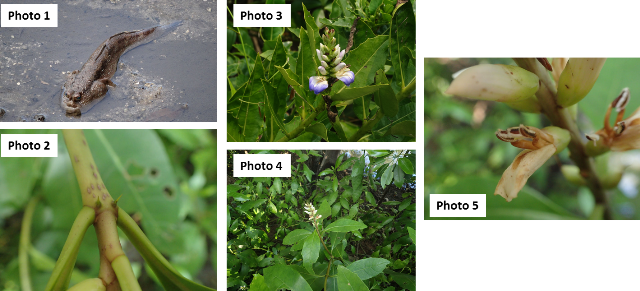
LAW Tsz Sum
|
|
After this five-day Singapore field study, not only can I gain the knowledge on animals and plants, I can also appreciate Singapore from different aspects.
Firstly, about the knowledge, we can see many different kinds of plants and animals in those nature reserves. If there were not a tour guide, I could hardly identify most of the species there, especially those species specific to Singapore. When walking along the nature trails and nature reserves, the guide patiently explained and introduced some special species and I have made notes as well as taken photos on them. Therefore, I could know the characteristics as well as appearance of those species and I could identify them after the field trip. Besides, this is a good and effective learning method; therefore, I will continue to use this method in the future guided field trips.
Besides, I could appreciate the nature of Singapore during the field study. I could closely observe the plants and animals, I could touch and smell the plants, such as the nice smell of pandan leaves, I could listen to the sounds produced by different animals, and I could even try to taste some of the plants!!! Using five senses to experience the nature is a really wonderful way to appreciate the nature.
Furthermore, I think we can learn a lot from Singapore on greening. Unlike Hong Kong, there are many greening spaces in the urban areas of Singapore. There are also famous gardens in Singapore such as Singapore Botanic Garden, Gardens by the Bay. Therefore, Singapore is named as "Garden City" and I find it comfortable to stay in this "Garden".
Besides, I appreciate that the scientists of National University of Singapore conduct many researches on conservation of environment. For example, there is a reef research and they would monitor the reefs, conserve the coral reefs as well as conduct adaptation strategies such as artificial reef. They are conducting the research not for the purpose of making money, but for conserving the nature. Also, they have done some interesting researches such as the personalities of spiders. I can feel their enthusiasm about nature.
Last but not least, I understand the importance of teamwork. As we are required to finish a group presentation, we have to share our photos and things we learnt among the group. If we fail to cooperate with each other, we cannot finish the presentation properly.
WOO Tak Hon
|
|
The most inspiring thing of the Singapore trip is the effort the government wants the public to contribute to, learn from and live with nature. The public research helpers, museum guide, as well as the effort government made to bring the forests and faunas close to urban areas.
Of course Singapore have taller trees, exquisite animals and greener city, i don't think Hong Kong is way behind Singapore. We always take the hills minutes away from our home as granted and never appreciated the nature there as much as we do in a new environment- Singapore. The two city shines in different ways that HK is more concentrated while Singapore is more even. I am sure HK can surpass Singapore if we can take message from the urban greening of SG into renewing of old towns.
The other thing I learn is playing with nature is the best way to feel what Biology really is. To feel, to taste, to smell, or even to utilize them as toys, or tools, or anything. It has much more impact than sitting in a room reading a book as I can always endeavor something by myself. We may see the products of a plant, but we may never see its original look. Pandian and Sunny just were playing around in the trails as if they were in the biggest playground in the world, which really gave me a culture shock. Of course we can't break plant in HK but the spirit is what makes it so meaningful to do.
HUI Kwok Lun
|
| From the field trip, apart from the knowledge about organisms found in Singapore as other students have mentioned, I think knowing about the culture is another highlight of the trip.
Regarding conservation, I found that the idea of conserving the nature is deep-rooted in the mind of Singaporean. They love the nature for the bottom of their heart. I can feel the passion and effort they have put in all the conservation works in Singapore. Comparing with Hongkongers, although we have more percentage coverage of natural environment than that in Singapore, Hong Kong people seemed to be indifferent about what is happening in the natural environment, They may even be unwilling to spend time to know about the nature simply because it is not their business.
Therefore, after the trip, I think lacking of interest and knowledge is one of the major problems in conservation in Hong Kong.
TSANG Tsz To
|
